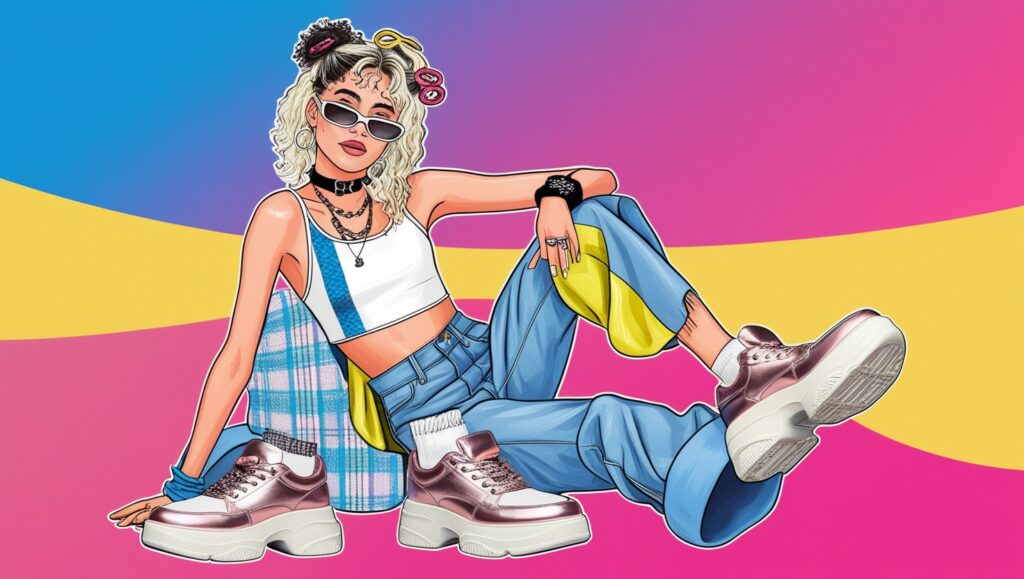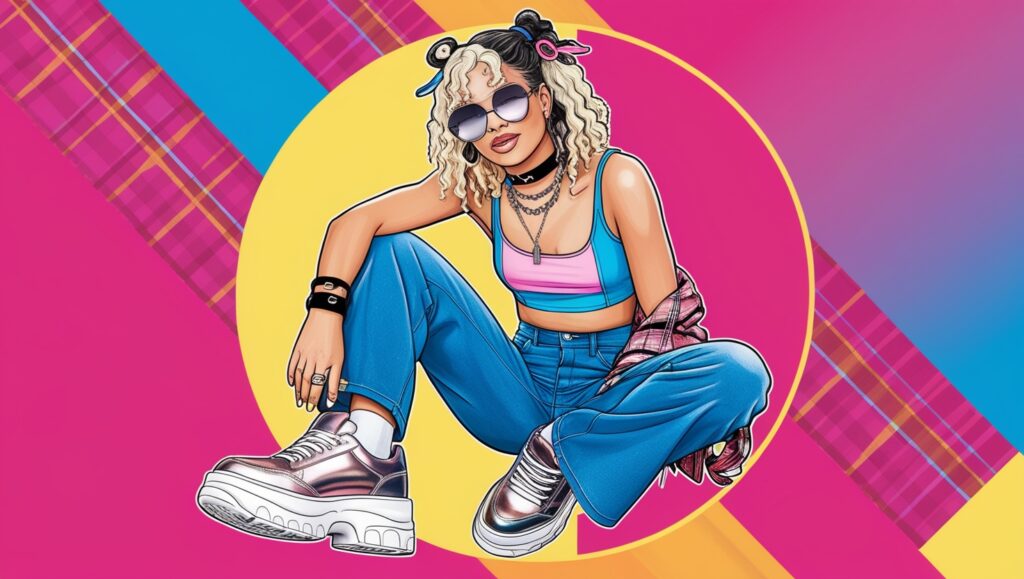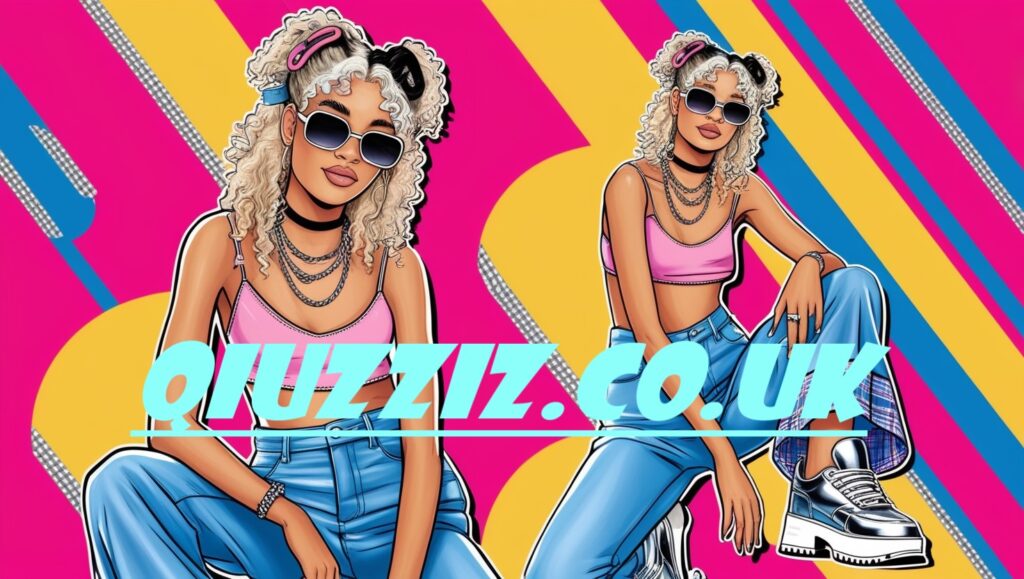The 90s fashion were an unforgettable era in fashion, marked by a dynamic mix of styles, attitudes, and cultural influences that transformed the way people dressed. From grunge to hip-hop, from minimalism to bold prints, the 90s saw a diverse range of looks that have become iconic in the history of fashion. What made this decade so unique was how fashion transcended traditional boundaries, mixing subcultures, social movements, and artistic expressions into mainstream styles.
In this article, we’ll explore the key trends, the influencers behind these shifts, and the legacy of 90s fashion. Whether you’re reminiscing about the days of flannel shirts, crop tops, or baggy jeans, or discovering this fascinating era for the first time, the 90s have something to offer everyone.
The Rise of Grunge Fashion
The Birth of Grunge: Seattle’s Influence
One of the most defining movements of 90s fashion was the grunge look, which originated in Seattle and quickly spread across the globe. Born from the music scene and popularized by bands like Nirvana and Pearl Jam, grunge fashion was a rebellious response to the polished, materialistic trends of the 1980s. The style was characterized by its emphasis on comfort, nonchalance, and a mix of high-end and thrift store finds.
Grunge outfits often included oversized flannel shirts, ripped jeans, band t-shirts, and worn-in boots. These clothes weren’t about luxury or status symbols but about comfort and a kind of anti-fashion ethos that rejected mainstream aesthetics. Kurt Cobain, the frontman of Nirvana, was one of the key figures who embodied this look, influencing an entire generation of teenagers and young adults to embrace a more unkempt, DIY style.
Key Pieces of Grunge Fashion
Ripped Jeans: Distressed denim jeans, often baggy and loose, were a staple of the grunge aesthetic.
Combat Boots: Dr. Martens boots were particularly popular, adding a tough edge to the relaxed, slouchy look.
Layering: Mixing textures, patterns, and colors became the hallmark of grunge style. It was not about coordinating your outfit but about expressing individuality.

Impact on Fashion and Music
The grunge movement helped blur the lines between fashion and music, where musicians were no longer confined to the traditional roles of entertainers but became true fashion icons. The popularity of Nirvana, Soundgarden, and Alice in Chains also led to a greater acceptance of “alternative” culture in mainstream media, and this influence is still evident in the way people dress today.
Hip-Hop and Streetwear: A Cultural Explosion
The Emergence of Streetwear
In the 90s fashion, hip-hop fashion went from underground to mainstream, influencing not just urban youth but also the wider culture. This was the era when oversized clothing became a sign of status and confidence. Rap artists like Tupac Shakur, The Notorious B.I.G., and Nas brought streetwear into the spotlight, and brands like FUBU, Wu-Wear, and Cross Colours started gaining recognition.
Key Elements of Hip-Hop Fashion
Baggy Jeans and Cargo Pants: Loose-fitting pants, often paired with oversized jackets, became staples for hip-hop fans.
Graphic T-Shirts and Hoodies: Bold logos, colorful designs, and references to hip-hop culture were common on t-shirts, hoodies, and sweatshirts.
Baseball Caps and Snapbacks: These hats became synonymous with hip-hop culture, often worn backwards or sideways.
Sneakers: Nike Air Jordans and Adidas Superstar sneakers became part of the streetwear uniform, blending function with style.
The Influence of Hip-Hop on High Fashion
One of the most notable aspects of 90s fashion was how hip-hop style influenced luxury brands. Designers like Tommy Hilfiger, Ralph Lauren, and Karl Lagerfeld started incorporating streetwear elements into their collections, realizing the power of the cultural movement. Hip-hop icons also started collaborations with fashion houses, further cementing the influence of this style on global fashion.
Minimalism and the Return of Simplicity
The Anti-Excess Movement
While grunge and hip-hop pushed fashion into more expressive territories, another major trend in the 90s fashion was minimalism. This style emerged as a reaction to the excesses of the 1980s and was characterized by clean lines, simple silhouettes, and muted colors. Designers like Calvin Klein, Jil Sander, and Helmut Lang helped popularize minimalist fashion, which dominated both casual wear and formal attire.

Key Features of Minimalist Fashion
Neutral Tones: Black, white, beige, and grey dominated the color palette, with occasional pops of muted colors like navy blue.
Tailored Pieces: Unlike the baggy, oversized styles of grunge or hip-hop, minimalist fashion favored well-tailored suits, dresses, and trousers that followed the natural lines of the body.
Lack of Ornamentation: Accessories were kept to a minimum, and clothing was devoid of logos or embellishments.
Iconic Minimalist Pieces
Slip Dresses: The slip dress, often worn with a simple cardigan or blazer, became a staple of minimalist fashion.
Turtlenecks and Simple Blouses: These were paired with tailored pants or skirts for a sleek, modern look.
Structured Blazers: A clean-cut, structured blazer was a central piece of the minimalist wardrobe, often paired with matching trousers.
The Legacy of Minimalism
Minimalist fashion has had a lasting impact on modern fashion, influencing many of the minimalist brands we see today, such as Everlane and COS. The idea of “quiet luxury,” where quality and simplicity are prioritized over visible logos, can be traced back to the 90s.
Supermodels as Fashion Icons
The 90s fashion saw the rise of the supermodel, a phenomenon that combined beauty, fame, and high fashion. Models like Naomi Campbell, Cindy Crawford, Claudia Schiffer, and Kate Moss became household names and synonymous with the era’s aesthetic. These women were not just the faces of major fashion campaigns but also helped set trends and create the idealized image of beauty and style.

The Power of Celebrity Endorsements
The 90s fashion was also a time when pop culture and fashion were increasingly intertwined. Musicians, actors, and athletes were frequently seen wearing the latest trends, and their influence became just as important as that of models and designers. Jennifer Aniston’s “Rachel” haircut, the fashion choices of Spice Girls, and even the athletic wear worn by the likes of Michael Jordan created waves that affected mainstream fashion.
Conclusion
The 90s fashion were a transformative decade for fashion. From grunge’s rebellious spirit to the boldness of hip-hop culture, and the simplicity of minimalist trends, the 90s blended different elements to create a diverse and exciting fashion landscape. These styles not only reflected the culture of the time but also shaped the future of fashion. Today, 90s fashion continues to inspire, influencing everything from street style to high-end couture. The revival of certain 90s trends, such as oversized blazers, bucket hats, and chunky sneakers, proves that the fashion of this iconic decade will never truly fade.
As we continue to look back at the 90s, it’s clear that its influence on fashion is as strong as ever. Whether you’re a fan of the edgy grunge look or prefer the sleek minimalism, there’s no denying that the 90s produced some of the most enduring and groundbreaking fashion trends in history.
FAQS
What are the main fashion trends from the 90s?
The 90s were marked by a variety of fashion trends, including grunge (flannel shirts, ripped jeans), hip-hop streetwear (baggy jeans, graphic tees, sneakers), and minimalist fashion (neutral tones, slip dresses, tailored pieces).
Why did grunge fashion become so popular in the 90s?
Grunge fashion became popular due to the rise of the alternative music scene, particularly in Seattle, where bands like Nirvana and Pearl Jam embodied a laid-back, anti-establishment attitude that resonated with young people.
How did hip-hop fashion influence mainstream fashion in the 90s?
Hip-hop fashion introduced oversized clothing, bold graphic tees, and sporty sneakers to mainstream fashion, with high-end designers collaborating with hip-hop icons and adopting streetwear elements in their collections.
What was minimalist fashion in the 90s?
Minimalist fashion focused on clean lines, simple silhouettes, and neutral colors. It was a reaction against the excess of the 1980s and emphasized quality and understated elegance.
Who were the key supermodels of the 90s?
The 90s were dominated by supermodels like Naomi Campbell, Cindy Crawford, Claudia Schiffer, and Kate Moss. These women were not only runway stars but also major cultural icons.
Is 90s fashion still popular today?
Yes, many 90s trends, such as oversized jackets, crop tops, and chunky sneakers, have made a comeback in recent years, showing the lasting influence of 90s fashion on modern style.


